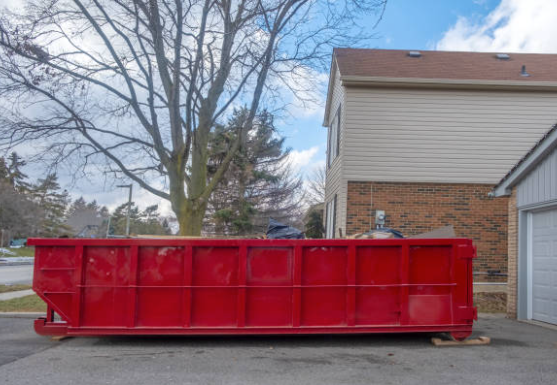
The main difference between a standard dumpster and a roll off dumpster lies in their design, mobility, and intended use. While traditional dumpsters are typically smaller, permanent fixtures used for regular waste collection, roll off dumpsters are larger, temporary containers that can be delivered and removed as needed for specific projects. The roll off design features wheels and a specialized hydraulic system that allows for easy placement and removal, making them ideal for construction, renovation, and large-scale cleanout projects.
Understanding Different Types of Dumpsters
Traditional Commercial Dumpsters
Traditional commercial dumpsters are the stationary waste containers commonly found behind businesses and apartment complexes. These dumpsters feature a hinged lid and are designed for regular scheduled pickups, typically serviced by front-loading garbage trucks.
| Feature | Traditional Dumpster | Roll Off Dumpster |
|---|---|---|
| Size Range | 2-8 cubic yards | 10-40 cubic yards |
| Mobility | Stationary | Portable |
| Access | Top-loading/side doors | Open top |
| Collection Method | Front-load truck | Roll off truck |
| Typical Use | Ongoing waste collection | Temporary projects |
Key Features of Roll Off Dumpsters
Design and Functionality
Roll off dumpsters incorporate several unique design elements that distinguish them from traditional dumpsters. The container sits on rollers with a specialized hook-lift system that allows it to be easily loaded onto and off of a specially designed truck. This mobility is what gives roll off dumpsters their name and makes them versatile for various applications.
Size and Capacity Options
Roll off dumpsters come in multiple sizes to accommodate different project needs:
| Size (Cubic Yards) | Typical Applications | Equivalent To |
|---|---|---|
| 10 yard | Small renovations | 3-4 pickup truck loads |
| 20 yard | Medium home projects | 6-7 pickup truck loads |
| 30 yard | Large remodels | 9-10 pickup truck loads |
| 40 yard | Commercial construction | 12-14 pickup truck loads |
Applications and Use Cases
Traditional Dumpster Uses
Standard dumpsters are primarily used for:
- Regular business waste disposal
- Apartment complex trash collection
- Restaurant waste management
- Retail store garbage handling
- Office building waste removal
These applications typically involve consistent, predictable waste volumes that require regular scheduled service.
Roll Off Dumpster Applications
Roll off dumpsters excel in situations requiring temporary, high-volume waste disposal:
- Construction and demolition projects
- Home renovations and remodeling
- Estate cleanouts
- Disaster cleanup
- Large landscaping projects
Cost Considerations and Rental Terms
Traditional Dumpster Costs
Traditional dumpster service usually involves:
- Monthly service fees
- Long-term contracts
- Regular pickup schedules
- Volume-based pricing
- Additional fees for overflow
Roll Off Dumpster Pricing
Roll off dumpster rentals typically include:
- Delivery and pickup fees
- Daily or weekly rental rates
- Weight limits and overage charges
- Permit fees (if required)
- Variable pricing based on size
Choosing the Right Option
Project Assessment Factors
Consider these key factors when deciding between dumpster types:
- Project duration
- Waste volume
- Type of debris
- Site accessibility
- Budget constraints
- Local regulations
Space Requirements
| Dumpster Type | Required Space | Access Needs |
|---|---|---|
| Traditional | Fixed location | Front loader access |
| Roll Off | Flexible placement | Straight truck access |
Environmental and Regulatory Considerations
Waste Management Regulations
Both dumpster types must comply with local waste management regulations, but requirements may differ:
- Material restrictions
- Weight limits
- Placement guidelines
- Environmental protection measures
- Special permits or licenses
Recycling and Sustainability
Modern waste management emphasizes recycling and sustainable practices:
- Material separation
- Hazardous waste handling
- Recycling requirements
- Environmental impact
- Resource recovery
Conclusion
Understanding the differences between traditional dumpsters and roll off dumpsters helps you make an informed decision for your waste management needs. While traditional dumpsters excel at handling regular, ongoing waste collection, roll off dumpsters provide the flexibility and capacity needed for temporary projects and large-scale cleanouts. Consider your specific requirements, including project scope, duration, and waste type, to choose the most appropriate solution.
Dumpster Comparison FAQs
How Much Does a Roll Off Dumpster Rental Cost Compared to a Regular Dumpster?
Roll off dumpster rentals typically cost between $300-$800 per week, while regular dumpster service usually ranges from $50-$200 monthly for ongoing service. The cost difference reflects the temporary nature and larger capacity of roll off dumpsters compared to regular commercial dumpsters.
Can You Put the Same Materials in Both Types of Dumpsters?
While both dumpster types accept general waste, roll off dumpsters are better suited for construction debris, heavy materials, and large items than regular dumpsters. Standard dumpsters typically have more restrictions on weight and material types.
How Long Can You Keep a Roll Off Dumpster vs a Regular Dumpster?
Regular dumpsters are permanent fixtures with ongoing service contracts, while roll off dumpsters are typically rented for specific periods ranging from a few days to several weeks. The rental duration for roll off dumpsters can usually be extended as needed.
Which Dumpster Type Requires More Space?
Roll off dumpsters generally require more space than regular dumpsters, needing an area approximately 22 feet long and 8 feet wide for placement, plus additional space for truck access. Regular dumpsters typically need only their footprint plus front-loader access space.
Do You Need a Permit for Both Types of Dumpsters?
Regular dumpsters rarely require permits as they’re typically placed on private property, while roll off dumpsters may require permits if placed on public property such as streets or sidewalks. Permit requirements vary by location and placement situation.